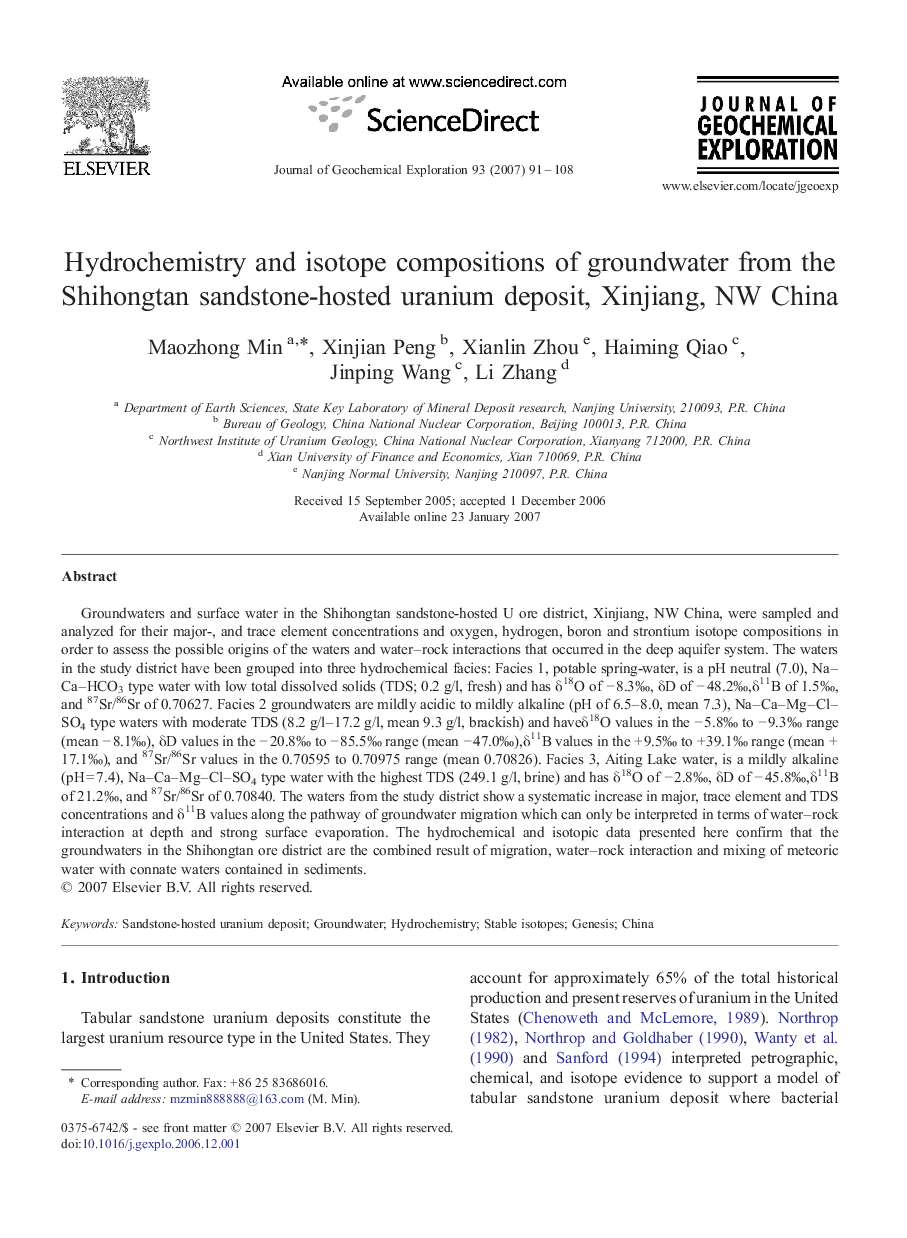| کد مقاله | کد نشریه | سال انتشار | مقاله انگلیسی | نسخه تمام متن |
|---|---|---|---|---|
| 4458398 | 1312676 | 2007 | 18 صفحه PDF | دانلود رایگان |

Groundwaters and surface water in the Shihongtan sandstone-hosted U ore district, Xinjiang, NW China, were sampled and analyzed for their major-, and trace element concentrations and oxygen, hydrogen, boron and strontium isotope compositions in order to assess the possible origins of the waters and water–rock interactions that occurred in the deep aquifer system. The waters in the study district have been grouped into three hydrochemical facies: Facies 1, potable spring-water, is a pH neutral (7.0), Na–Ca–HCO3 type water with low total dissolved solids (TDS; 0.2 g/l, fresh) and has δ18O of − 8.3‰, δD of − 48.2‰,δ11B of 1.5‰, and 87Sr/86Sr of 0.70627. Facies 2 groundwaters are mildly acidic to mildly alkaline (pH of 6.5–8.0, mean 7.3), Na–Ca–Mg–Cl–SO4 type waters with moderate TDS (8.2 g/l–17.2 g/l, mean 9.3 g/l, brackish) and haveδ18O values in the − 5.8‰ to − 9.3‰ range (mean − 8.1‰), δD values in the − 20.8‰ to − 85.5‰ range (mean − 47.0‰),δ11B values in the + 9.5‰ to + 39.1‰ range (mean + 17.1‰), and 87Sr/86Sr values in the 0.70595 to 0.70975 range (mean 0.70826). Facies 3, Aiting Lake water, is a mildly alkaline (pH = 7.4), Na–Ca–Mg–Cl–SO4 type water with the highest TDS (249.1 g/l, brine) and has δ18O of − 2.8‰, δD of − 45.8‰,δ11B of 21.2‰, and 87Sr/86Sr of 0.70840. The waters from the study district show a systematic increase in major, trace element and TDS concentrations and δ11B values along the pathway of groundwater migration which can only be interpreted in terms of water–rock interaction at depth and strong surface evaporation. The hydrochemical and isotopic data presented here confirm that the groundwaters in the Shihongtan ore district are the combined result of migration, water–rock interaction and mixing of meteoric water with connate waters contained in sediments.
Journal: Journal of Geochemical Exploration - Volume 93, Issue 2, May 2007, Pages 91–108